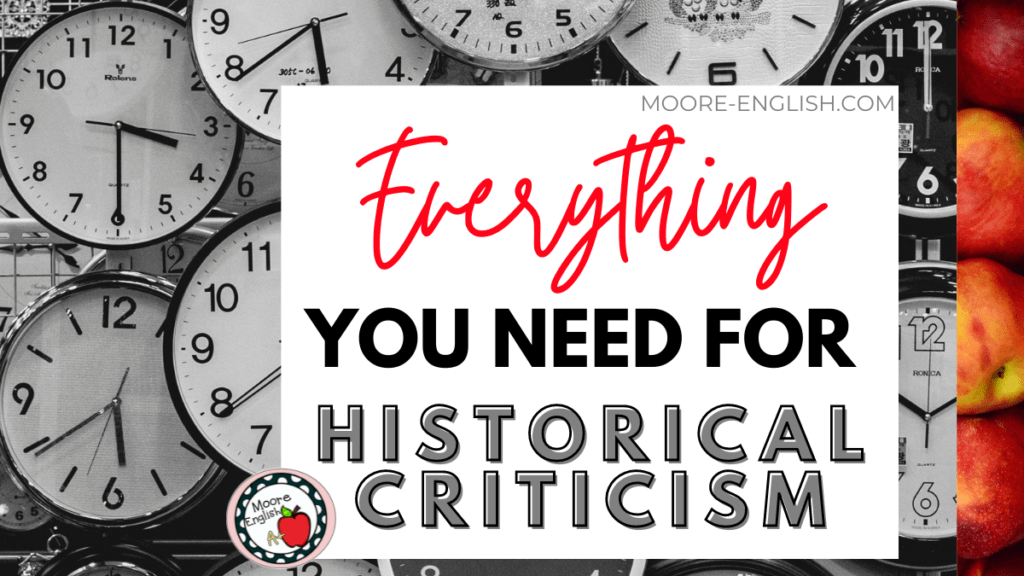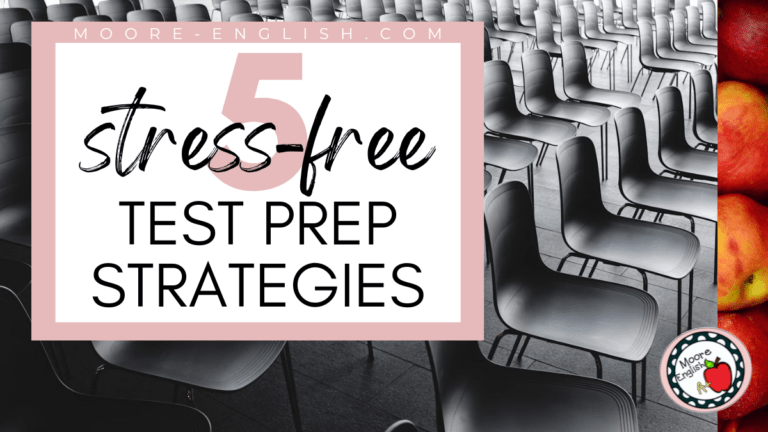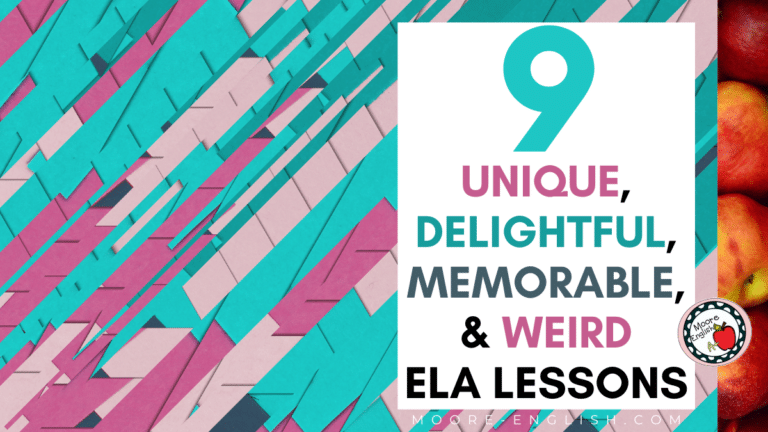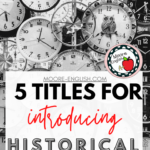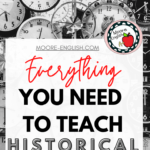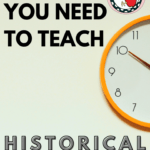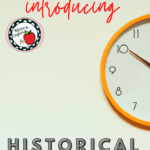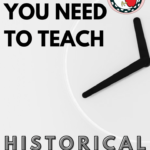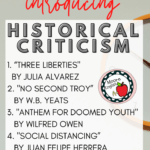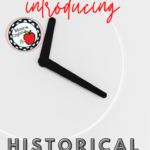At my school, our American literature class is mostly chronological. Students move from early American writing to the contemporary period. In the course, students have the opportunity to analyze the development of American literature. By the end of the course, students are able to explain the forces that led American literature to its current state.
As a result, we spend a lot of time discussing literary movements and their historical and cultural context(s). By the end of the year, students are well-versed in historical criticism. With this in mind, I wanted to share some strategies, resources, and text suggestions for introducing historical criticism.
This post this post may contain affiliate links. Please read the Terms of Use.
Introducing Historical Criticism
Before ever introducing the language of “historical criticism,” it’s important to get students thinking like a literary critic. To do this, I begin with a short text, being careful to choose a piece where historical context plays a significant role. This year, I used “The Death of the Ball Turret Gunner” to introduce historical criticism. However, there are lots of texts you could choose. Here are some favorite options:
- “Three Liberties: Past, Present, Yet to Come” by Julia Alvarez
- “On Being Brought from Africa to America” by Phillis Wheatley
- “The Charge of the Light Brigade” by Alfred, Lord Tennyson
- “Anthem for Doomed Youth” by Wilfred Owen
- “Social Distancing” by Juan Felipe Herrera
- “No Second Troy” by W.B. Yeats
While my class focuses on American literature, some of the texts I have used to introduce historical criticism come from authors who are not American. It’s important to draw additional perspectives into the classroom. Furthermore, this helps students understand that literary movements rarely happen in isolation.
Similarly, I prefer to choose non-threatening poems for introducing a critical lens. With that in mind, “Three Liberties” is a pretty long poem. Similarly, “Social Distancing” is a challenging concrete poem. However, both of these poems relate to the pandemic. Since this event has played such a significant role in students’ lives, these poems make historical criticism low stress and immediately relevant.
Exploring Literary Movements
Overall, my schools’ junior-level curriculum is broken up into six units with each focusing on a specific literary movement. To help students move through the literary movements, we create a classroom timeline highlighting important events. This helps students visualize the intersection of history and literature.
Even with our timeline, I quickly learned that students struggle to remember the characteristics of each literary movement. To help with this, I started to develop acronyms that fit each literary period. I also put together note sheets to help students distinguish different literary periods. Here are my notes sheets:
- American Romanticism
- American Regionalism
- Transcendentalism
- Literary Realism Notes
- American Literary Modernism
- American Literary Post-Modernism
All of these notes sheets are included in my Literary Movements Bundle, which will take students from 1800-present. Overall, the bundle is like getting two of the notes pages for free!
Engaging Historical Criticism
Throughout the year, the class moves through each literary period, and we’re steadily moving toward naming “historical criticism.” Long before In introduce students to this term, I start encouraging them to think like an historical critic. To do this, I focus on asking specific questions about each text.
- What did the American Dream look like in this time period?
- What was happening in the world when the author wrote and published this text?
- Similarly, how does the text represent the literary movement in which it was published?
- Then, if the author wrote in the modern day, how would the writing be different?
- Further, in what way does the text’s historical context affect the characters and setting?
- How would this text be different if it had been written during a different literary period?
- Then, who are the main characters, and how do their motives and values reflect their historical context?
In the first four units (1800-1915), these questions are as close as we get to historical criticism. For most of my students, junior year is the first time they hear about literary movements. It takes us the first two-thirds of the year to get used to the idea that history and literature are even kind of related.
Why start with Modernism?
Since New Criticism begins picking up steam in the early Twentieth Century, this is when I first introduce students to the term “historical criticism.” As students begin exploring Modernism, we begin using the language of literary criticism, nailing down formalism, historical, and biographical criticism before moving on to more complex critical perspectives.
Overall, Modernism is a good place to introduce the language of historical criticism because the historical context of World War I, the Jazz Age, and the Great Depression is so prevalent in literature that it’s hard for students to overlook. Here are some Modern texts that work well for practicing historical criticism:
- Firstly, “Grass” by Carl Sandburg
- Secondly, “The Unknown Citizen” by W. H. Auden
- Then, “[i carry your heart with me (i carry it in]” by e. e. cummings
- Lastly, The Great Gatsby and “Winter Dreams” by F. Scott Fitzgerald
Further Reading
Since literary criticism is one of my passions, I’ve written quite a bit about it. Check out these related posts and resources:
- 5 Reasons to Include Literary Criticism, and 5 Ways to Make it Happen
- How to Introduce Deconstructionist Literary Criticism
- Teaching at the Intersection of History and Literature
- 8 Ways to Bring Creativity into the Classroom
- 40 Texts for Teaching Literary Criticism
- Historical and Biographical Criticism
- Introducing Literary Criticism

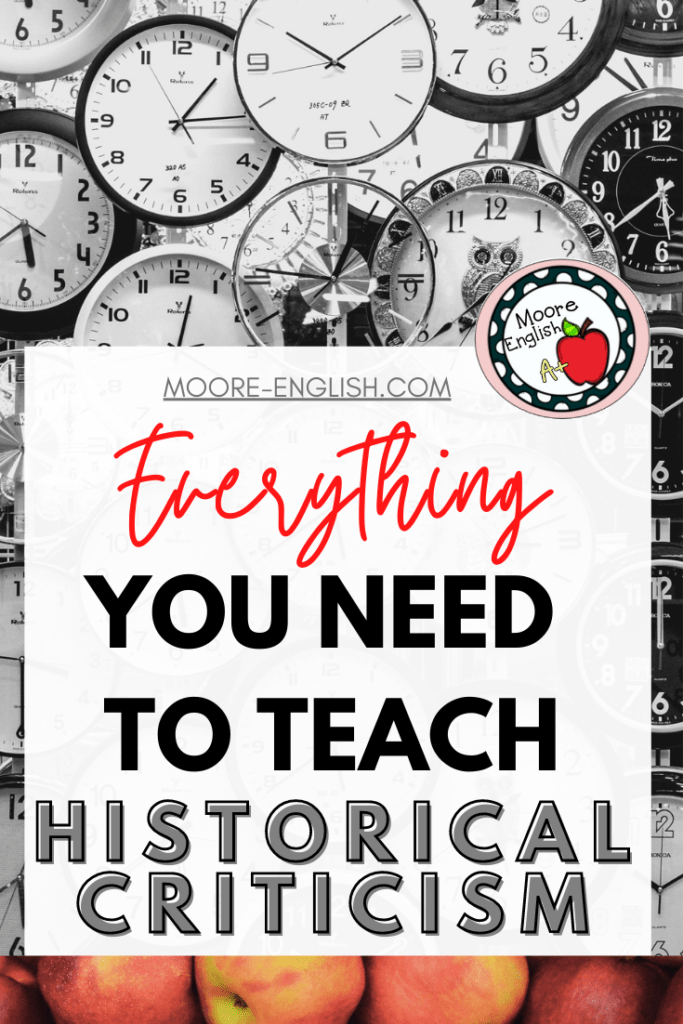
Photo by Moritz Kindler on Unsplash

